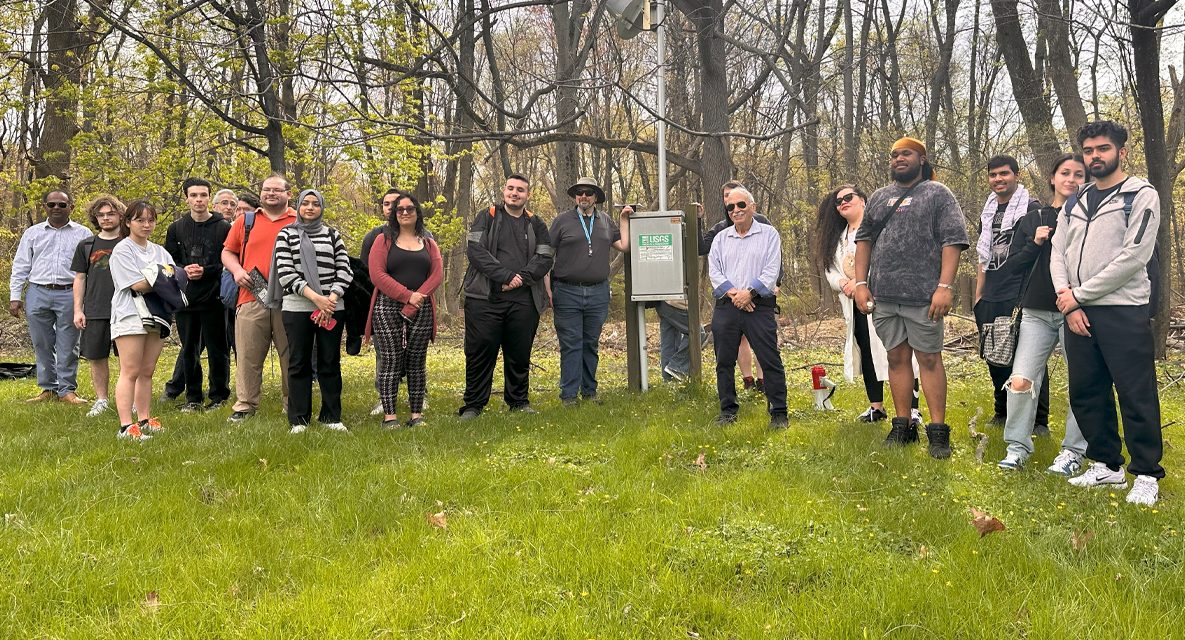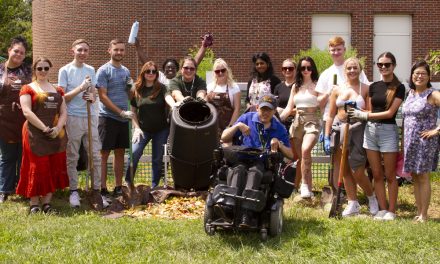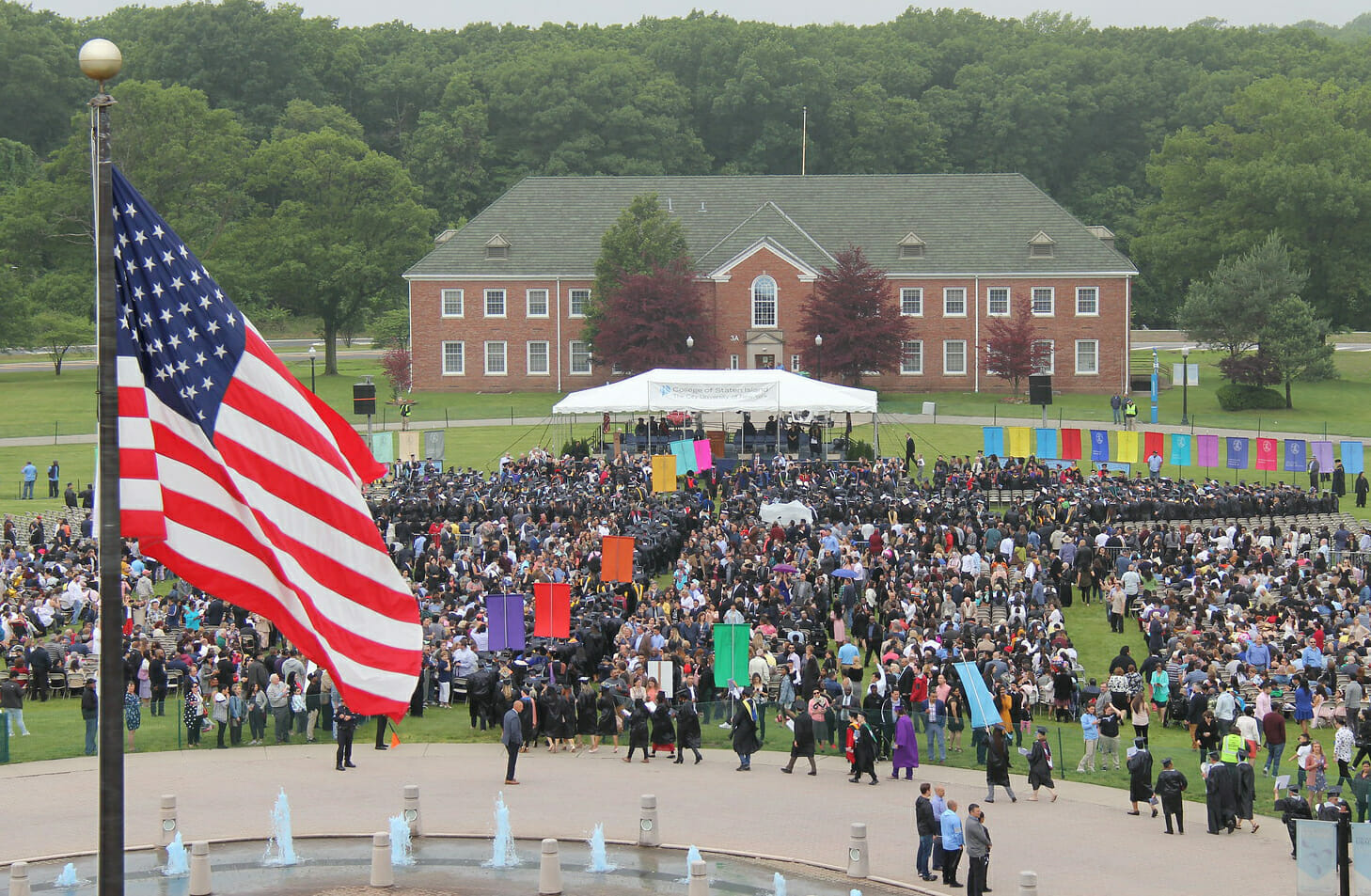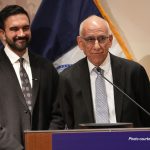On Earth Day, celebrated this year on Tuesday, April 22, students were led by Professor Dr. Alan Benimoff on an informative journey around campus, learning about the different geological infrastructure and features we walk by every day.
CSI Alumnus and now full-time Geology Professor for the Earth and Environmental Sciences Program, Benimoff, spent some of his time at CSI in the Engineering Science program as a student interested in Electrical Engineering until he switched his major to Geology. While earning his AS degree, Benimoff was hired in the Physics Labs at CSI in the summer, when an instructor teaching a Geology course took students on a trip to upstate New York, where it piqued Dr. Benimoff’s interest in the origin and formation of rocks (petrogenesis.)
‘I got so enthused with the folded and faulted rocks while in upstate New York so I changed my major to Geology. Fortunately, in the Engineering Science program I had a lot of math and physics and chemistry, which helped me in my Geology education.”
Students were asked to gather in front of Building 4N, where Dr. Benimoff led them to the first destination of a brief tour around campus. First, stopping between Building 1R and the tennis courts, Dr. Benimoff introduced a boulder that we learned had the properties of an igneous rock. During the tour, students also learned about some of the basic processes that occur from our climate and environment such as transpiration and evaporation—two important parts of the hydrologic cycle, which is the circulation of water from the ground to the Earth’s atmosphere. Transpiration is the process of water being absorbed by a plant’s roots and transporting the water up the plant to its leaves where it evaporates. Evaporation is the process of water directly changing into vapor on a surface like a lake.
On our tour, Dr. Benimoff made a point of emphasis on a few of the other important geological components our campus is built around, like the USGS Stream and Groundwater Gauges located on the north and south sides of the campus. Both gauges collect data and monitor the levels and quality of groundwater and stream water, which helps us learn about hazards that could threaten lives. They also provide information on how groundwater and stream systems work relevant to climate change, or precipitation.
A few hundred steps beyond the North Entrance of the campus, we visited an outcrop that Dr. Benimoff spoke in depth about during the tour. He talked about the formation and weathering of different rocks like the sedimentary layer’s cake-like structure, as well as the steps of the hydrologic cycle that occur in the outcrop.
He notified students about how that small outcrop holds a noticeable amount of valuable research potential that can be studied by the Earth and Environmental Sciences Program.
“That outcrop I showed you in the north where I was in the ravine next to the rock, that needs a lot of study,” he said. “For some of my students who are working on a capstone course in
research in the Earth and Environmental Science Program, I might be able to get some of them to study that a little further so we can find out more about it.”
Mark Zdziarski, a full-time Laboratory Technician for the Earth and Environmental Sciences Program, also led students through the 204-acre campus tour, informing us on the background of the campus’s geologic features. By using a hand lens, Zdziarski identified different minerals on the rock as well as rock textures, and features like lichen that can grow on the surface of the boulders.
Students learned about CSI’s outdoor geologic laboratory on this tour through campus with Professor Benimoff. Living on this planet, it’s natural to question what surrounds us now compared to what was here millions of years ago, and there is no better time than Earth Day to learn about the 204-acre site and our campus’s geological features directly in their natural context.
By Kyle Cicero



![[video] Con Ed Supports Water Quality Workshops for HS Students](https://csitoday.com/wp-content/uploads/2011/02/Irving_and_Morales_020211.jpg)














